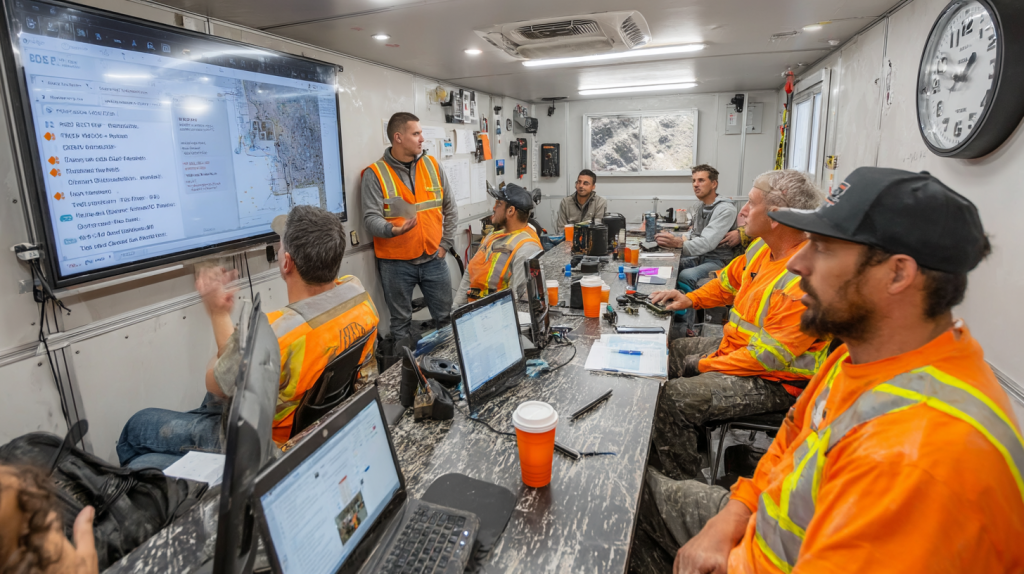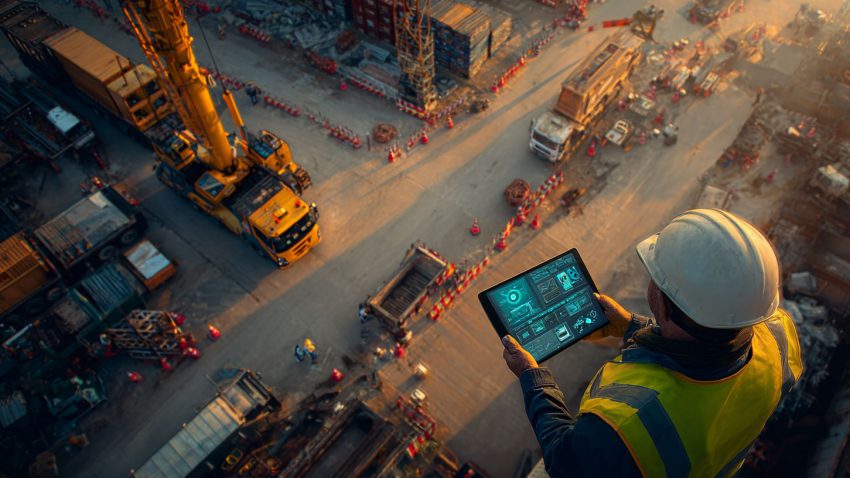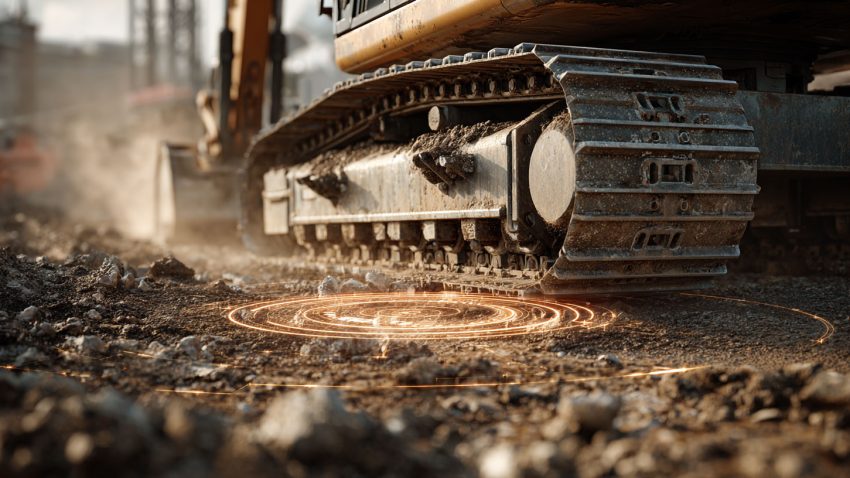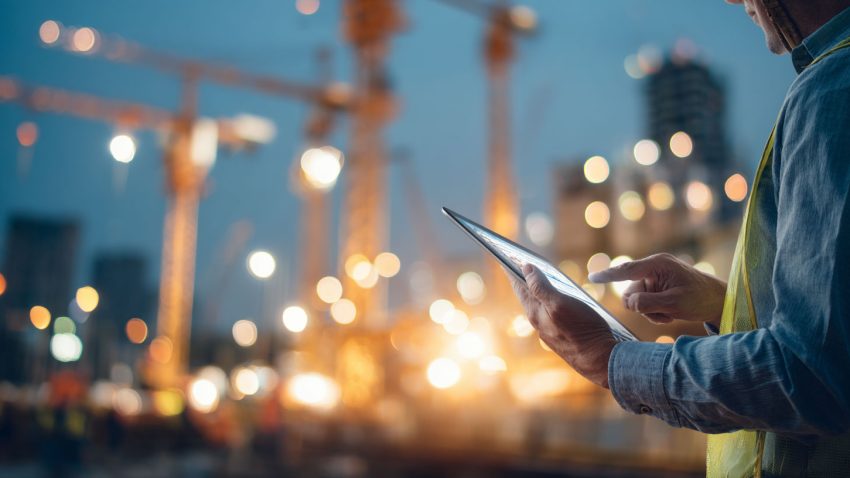How AI Tools Are Transforming Construction Logistics Plans (CLPs) for Scheduling, Deliveries, and Field Coordination
Table of Contents:
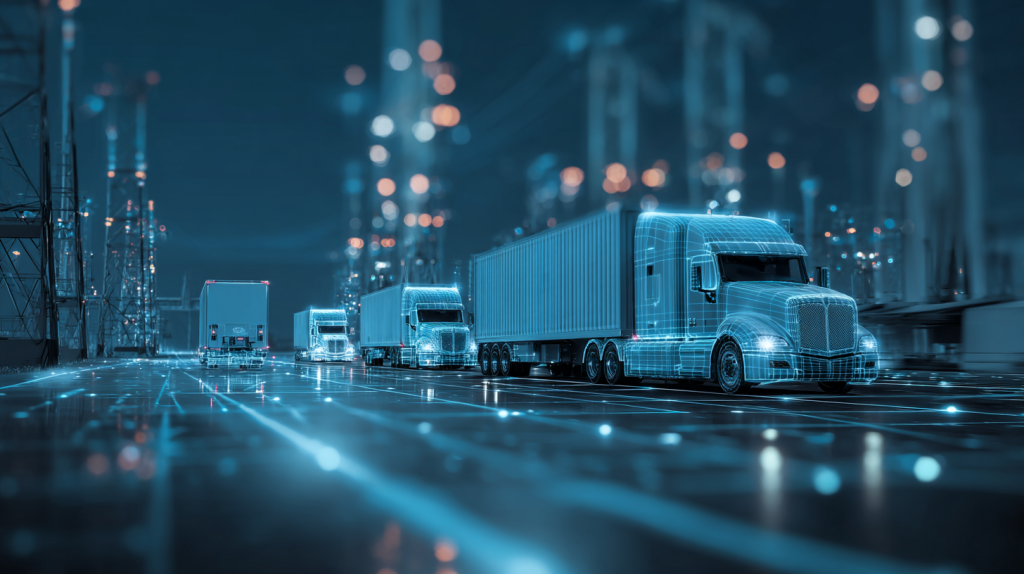
In modern construction, logistics is everything. On large, fast-paced projects, dozens of subcontractors, hundreds of deliveries, and thousands of moving parts must align perfectly each day. Even a minor delay in one area—say, a late material drop or a blocked access route—can ripple across the entire project schedule. That’s why many contractors and superintendents are now turning to Artificial Intelligence (AI) to improve how Construction Logistics Plans (CLPs) are created, updated, and managed.
Traditionally, CLPs were static documents developed during preconstruction and updated manually throughout the project. But AI tools are changing that. They analyze vast amounts of data—from weather forecasts and traffic conditions to equipment tracking and crew productivity—to help predict potential bottlenecks before they happen. Instead of reacting to disruptions, teams can now anticipate them, keeping projects running smoothly and on schedule.
AI also transforms how logistics information is shared across the field. Real-time data flows automatically between scheduling software, GPS-enabled equipment, and project dashboards, giving superintendents a live overview of deliveries, crew movement, and staging areas. These insights not only improve scheduling accuracy but also reduce waste, downtime, and safety risks.
In this article, we’ll explore how AI tools are revolutionizing Construction Logistics Plans for scheduling, deliveries, and field coordination. You’ll learn what technologies are driving this shift, how AI integrates with platforms like StruxHub, and how forward-thinking contractors are using data-driven planning to unlock higher productivity and safer, more predictable projects.
Why AI Is Revolutionizing Construction Logistics Planning
Artificial Intelligence is rapidly reshaping how construction projects are planned and executed. At its core, AI brings predictive capability to logistics—the ability to forecast issues before they occur. For Construction Logistics Plans (CLPs), this means smarter scheduling, optimized deliveries, and dynamic coordination across crews and equipment.
AI algorithms can analyze multiple variables simultaneously, such as traffic flow, weather data, crane availability, and material supply chains. This allows project managers to create schedules that adapt automatically to changing conditions. For instance, if rain is expected to delay concrete pours, the AI system can automatically reschedule deliveries or reassign equipment to maximize productivity.
Beyond scheduling, AI improves visibility. It consolidates data from sensors, GPS trackers, and construction management software into one live dashboard, showing exactly what’s happening across the site in real time.
Top Benefits
- Predicts potential delays and reschedules activities automatically.
- Centralizes real-time logistics data for better decision-making.
- Improves productivity by aligning deliveries, crews, and equipment.
Best Practices
- Use AI analytics early in the preconstruction phase to plan smarter.
- Integrate AI with existing scheduling and project management tools.
- Regularly train teams to interpret AI-generated insights effectively.
Q&A Mini Section
Q: How does AI differ from traditional scheduling software?
A: Traditional tools track progress; AI predicts outcomes and adjusts plans proactively.
Q: Can AI really reduce delays?
A: Yes, by analyzing data trends, AI can anticipate bottlenecks and suggest solutions before delays occur.
Q: Is AI useful for small projects?
A: Absolutely—AI scales to project size, offering benefits for both small and large construction operations.
AI transforms logistics from reactive planning into proactive management, turning uncertainty into efficiency and control.
Related Articles:
Best Guide to Construction Logistics Plans (CLPs): What Owners Want to See Before Work Starts
How Superintendents Use AI-Enhanced Tools to Improve Jobsite Communication
How AI Tools Are Automating Daily Construction Reports for Superintendents
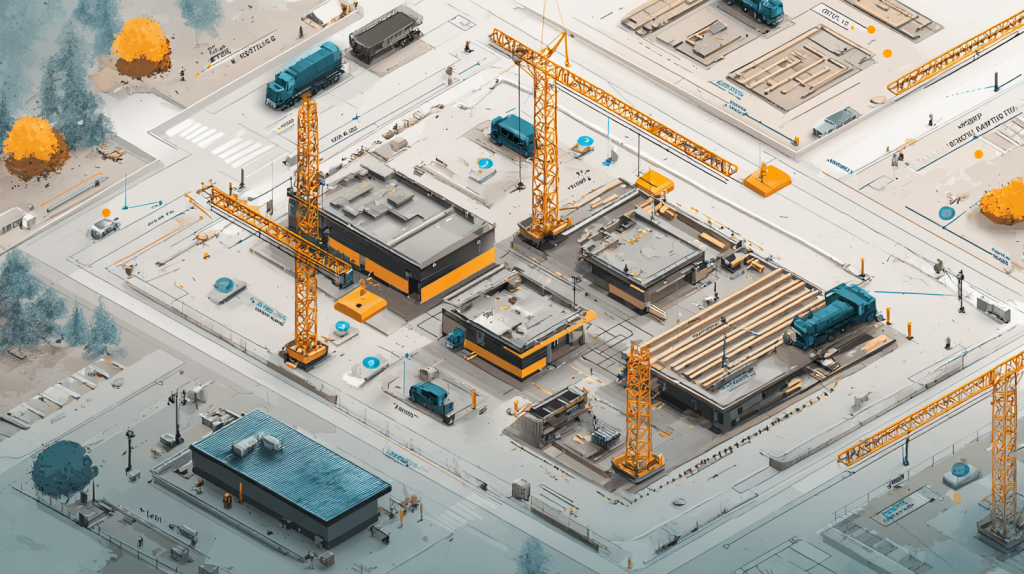
How AI Optimizes Construction Scheduling
Scheduling is one of the biggest pain points in logistics planning. Delays from weather, manpower shortages, or late deliveries can derail even well-organized projects. AI tackles these challenges head-on through predictive scheduling—analyzing data to forecast disruptions and automatically reshuffle resources to maintain workflow.
By processing live inputs such as weather forecasts, delivery schedules, and subcontractor performance, AI can determine the best sequencing of tasks. Machine learning models can even learn from past projects, identifying patterns that commonly cause downtime or inefficiency.
AI also helps with resource allocation. It identifies when equipment is underutilized, predicts when materials will be needed, and ensures crews are available where they’re most productive. These adjustments happen continuously, keeping the schedule dynamic and resilient to change.
Top Benefits
- Adapts schedules automatically to real-world conditions.
- Reduces idle time for crews and machinery.
- Improves forecasting accuracy using historical data.
Best Practices
- Connect AI scheduling tools with procurement and delivery tracking systems.
- Collect consistent site data to improve future predictions.
- Monitor AI recommendations but validate them with field expertise.
Q&A Mini Section
Q: Can AI replace human schedulers?
A: No—it enhances their decision-making by providing data-driven recommendations.
Q: How accurate are AI-generated schedules?
A: Accuracy improves over time as the AI learns from project performance data.
Q: Does AI scheduling integrate with existing project management tools?
A: Yes—most systems integrate directly with software like Primavera, Procore, or StruxHub.
AI-enhanced scheduling keeps logistics flexible, helping teams maintain productivity even when conditions change unexpectedly.

How AI Improves Material Deliveries and Equipment Tracking
Deliveries and equipment movement are critical components of every Construction Logistics Plan, and AI now makes managing them far more efficient. With predictive analytics and real-time tracking, AI tools ensure that materials arrive exactly when—and where—they’re needed.
AI integrates with supply chain data, GPS trackers, and delivery systems to optimize routes, reduce fuel use, and avoid congestion at gates or laydown areas. It can analyze local traffic data, weather conditions, and site access points to plan the most efficient delivery paths. This not only reduces downtime but also minimizes carbon emissions and equipment wear.
In addition, AI enables automated alerts. When deliveries are delayed or vehicles deviate from planned routes, project teams are notified instantly. Superintendents can then reassign crews or equipment to maintain productivity while waiting.
Top Benefits
- Ensures just-in-time material delivery with minimal delays.
- Tracks and optimizes heavy equipment utilization.
- Reduces costs and emissions through smarter routing.
Best Practices
- Use AI-integrated fleet management and tracking systems.
- Align supplier schedules with AI-driven project forecasts.
- Automate alerts for early detection of delivery or equipment issues.
Q&A Mini Section
Q: How does AI improve delivery timing?
A: It analyzes external factors like traffic, supplier capacity, and weather to create accurate arrival estimates.
Q: Can AI reduce fuel and transportation costs?
A: Yes—by optimizing routes and minimizing idle time, AI cuts unnecessary travel and energy waste.
Q: Does AI require new equipment to work?
A: Not necessarily—it can connect with existing GPS and logistics tracking devices already used onsite.
AI-powered logistics transforms how materials and machinery move across the jobsite, reducing waste while improving speed, accuracy, and sustainability.
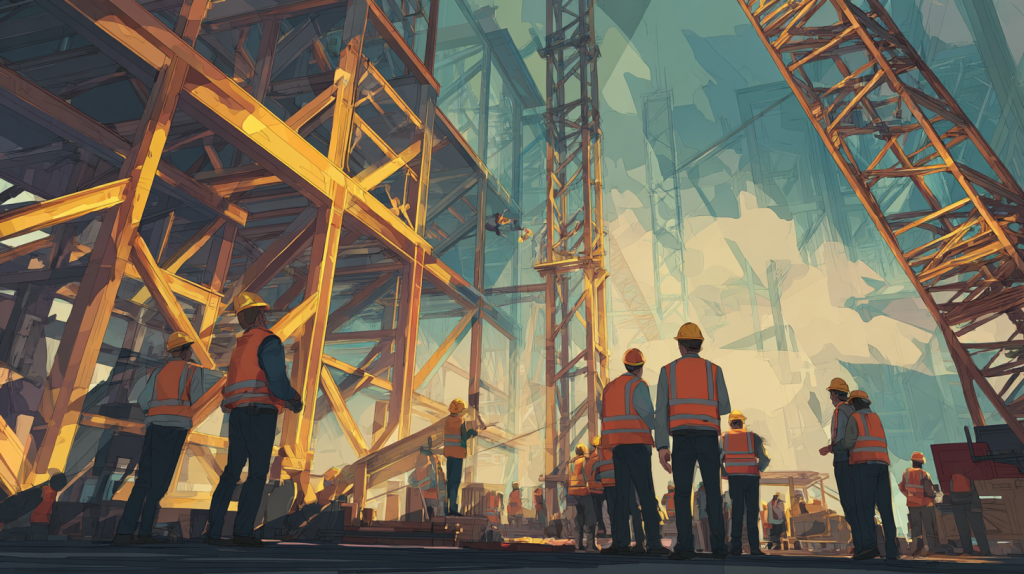
How AI Tools Enhance Field Coordination and Crew Productivity
AI is changing how field coordination happens on large construction projects. In the past, superintendents relied on phone calls, paper schedules, and manual reporting to track crews and activities. Today, AI tools centralize this information, providing real-time visibility into who is working where, which materials are available, and how each task aligns with the overall schedule.
By analyzing patterns in crew performance, AI can identify bottlenecks such as underutilized teams, overlapping trades, or wasted motion. It also predicts when tasks will fall behind and suggests adjustments—like reallocating workers or rearranging deliveries—to maintain efficiency. AI-enabled platforms even automate daily reporting, turning field data into instant insights for project managers.
The result is a smoother, more synchronized jobsite where teams stay aligned without endless coordination meetings. Crews know their priorities, foremen can monitor progress live, and superintendents can spend less time troubleshooting and more time leading.
Top Benefits
- Improves visibility into crew locations and task progress.
- Predicts coordination conflicts before they impact schedules.
- Automates reporting to save time for superintendents.
Best Practices
- Equip foremen with mobile access to AI dashboards.
- Use predictive alerts to adjust manpower before delays occur.
- Review AI performance insights during daily huddles.
Q&A Mini Section
Q: How does AI improve communication between field teams?
A: It centralizes updates and eliminates guesswork by automatically syncing task data across all users.
Q: Can AI recommend manpower adjustments?
A: Yes, it analyzes workload distribution and productivity trends to suggest optimal crew allocation.
Q: How does this help superintendents daily?
A: AI saves them hours by reducing manual coordination, freeing time for high-level oversight and problem-solving.
AI makes jobsite coordination seamless, giving leaders the information they need to make faster, smarter decisions.
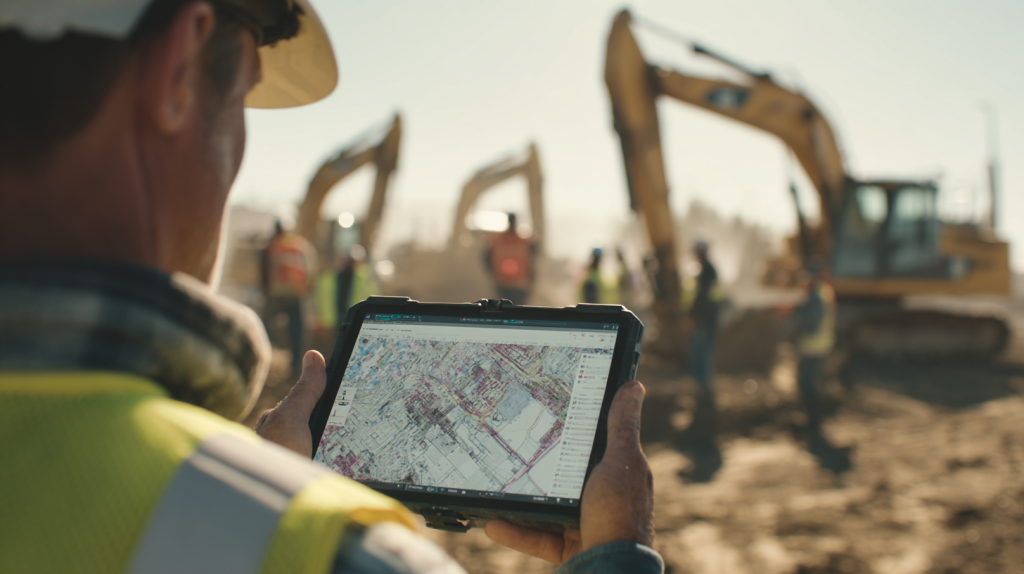
StruxHub
Experience the power of StruxHub today and witness firsthand how it can revolutionize your construction operations.
What Challenges Do Contractors Face When Adopting AI for Logistics Planning?
While the benefits of AI are clear, adopting it comes with challenges that contractors must manage carefully. The biggest hurdle is data readiness—AI depends on consistent, high-quality data to generate accurate insights. If input data from suppliers, schedules, or field reports is inconsistent or incomplete, results can be unreliable.
Another challenge is user adoption. Many construction professionals are accustomed to traditional planning methods, and shifting to AI-driven tools requires time, training, and trust. Without buy-in from superintendents and field crews, even the best AI system may go underutilized.
Integration is also a consideration. Contractors often use multiple platforms—scheduling software, fleet trackers, BIM models, and reporting systems. AI tools must connect seamlessly to these systems to deliver full value.
Despite these challenges, early adopters report that once teams adjust, productivity and predictability increase dramatically. With proper setup, AI becomes an indispensable partner that continuously learns and improves with each project.
Top Benefits
- Highlights the real-world challenges of digital transformation.
- Encourages teams to standardize data for stronger results.
- Prepares organizations for smoother AI implementation.
Best Practices
- Clean and structure existing project data before onboarding AI tools.
- Offer hands-on training for field and office teams.
- Choose AI systems that integrate with existing project software.
Q&A Mini Section
Q: Why is data quality so important for AI?
A: Because AI relies on accurate, consistent data to make reliable predictions and recommendations.
Q: How can contractors encourage team adoption?
A: By showing early wins—using AI to solve small, visible problems that build trust and confidence.
Q: Does AI replace human decision-making?
A: No—it enhances it, helping leaders make faster, data-driven decisions based on real-time insights.
Understanding these challenges ensures a smoother transition into AI-driven construction planning and stronger long-term results.
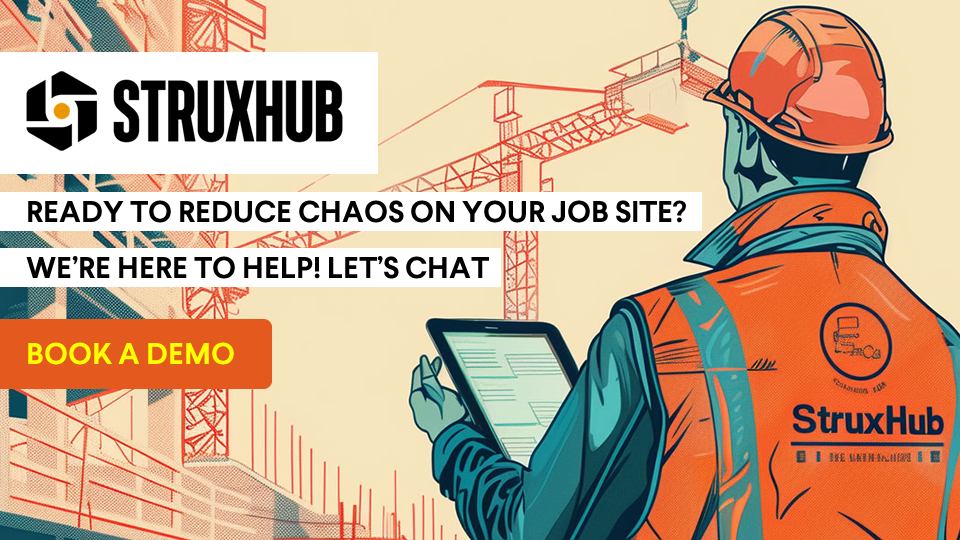
How AI Supports Safety and Risk Reduction in Construction Logistics
Safety has always been a top priority on construction sites, and AI now adds a predictive layer that helps teams identify and mitigate risks before accidents happen. Through pattern recognition and real-time monitoring, AI can detect potential safety hazards such as equipment congestion, unsafe worker behavior, or environmental conditions that could lead to incidents.
AI-powered cameras and sensors can analyze live footage to ensure workers wear PPE, stay within designated zones, and avoid unsafe proximity to machinery. Machine learning models can also review historical safety reports to predict which activities are most likely to cause accidents. This allows superintendents to plan work sequences and logistics routes with safety in mind.
Additionally, AI tools help forecast environmental risks such as high winds or heat waves, automatically adjusting crane operations or delivery schedules. When connected to construction logistics plans, these insights make safety proactive rather than reactive.
Top Benefits
- Predicts and prevents accidents through data-driven analysis.
- Monitors jobsite conditions in real time for faster responses.
- Integrates safety metrics directly into logistics workflows.
Best Practices
- Pair AI safety tools with human oversight to validate results.
- Use AI data to enhance toolbox talks and safety briefings.
- Update AI systems with new incident data to improve accuracy.
Q&A Mini Section
Q: How does AI detect unsafe conditions?
A: Using cameras, sensors, and machine learning algorithms that recognize patterns linked to safety violations.
Q: Can AI predict weather-related safety risks?
A: Yes—it uses live weather data to flag conditions that may require schedule or equipment changes.
Q: Is AI compliance-ready for OSHA or ISO standards?
A: Many AI platforms are designed to align with existing safety regulations and reporting requirements.
By integrating safety intelligence directly into logistics planning, AI helps contractors create safer, more controlled jobsite environments.
StruxHub
Discover how StruxHub can revolutionize your construction management. Contact us today!
How StruxHub Uses AI to Simplify Construction Logistics and Field Coordination
While AI tools can be complex on their own, StruxHub simplifies their power by embedding intelligent analytics directly into an intuitive construction management platform. Designed for superintendents and project managers, StruxHub connects AI-driven insights with scheduling, deliveries, and field operations in real time.
StruxHub’s AI features automatically detect patterns across logistics data—such as late deliveries, material shortages, or bottlenecks in crew productivity. The system then recommends adjustments to keep the schedule on track. It can also optimize delivery timing, assign equipment more efficiently, and alert teams when safety or coordination risks arise.
For field teams, StruxHub’s mobile dashboards provide clear, actionable insights without the technical complexity of traditional AI software. This allows superintendents to make quick decisions directly from the jobsite—without waiting for reports or office input.
By integrating AI into daily operations, StruxHub turns Construction Logistics Plans into living, self-improving systems that anticipate problems, streamline communication, and enhance jobsite efficiency.
Top Benefits
- Simplifies AI for real-world construction workflows.
- Provides predictive insights for scheduling, logistics, and safety.
- Syncs automatically with field and office systems for real-time visibility.
Best Practices
- Use StruxHub as the central hub for AI-driven logistics and scheduling.
- Review AI-generated recommendations in daily coordination meetings.
- Leverage predictive analytics to optimize deliveries and manpower allocation.
Q&A Mini Section
Q: How does StruxHub make AI easier for field teams?
A: It integrates AI insights directly into a familiar, mobile-friendly platform that’s simple to use onsite.
Q: Can StruxHub’s AI automate scheduling updates?
A: Yes—it analyzes delays and resource availability to suggest or implement real-time adjustments.
Q: What’s the biggest advantage for superintendents?
A: They gain predictive control—knowing about logistics or coordination issues before they happen.
StruxHub brings the future of AI-driven logistics to today’s construction sites, giving superintendents the power to lead smarter, safer, and more efficiently than ever before.
What is a Construction Logistics Plan (CLP), and how does AI improve it?
A Construction Logistics Plan (CLP) is a detailed document that defines how materials, people, and equipment move through a jobsite from start to finish. It covers delivery schedules, access routes, storage zones, waste management, and coordination between trades. The goal of a CLP is to keep the site organized, safe, and productive by minimizing congestion and maximizing efficiency.
Artificial Intelligence (AI) takes CLPs to a new level by turning them into dynamic, data-driven systems rather than static blueprints. AI tools analyze live data—such as delivery schedules, weather conditions, traffic, and manpower availability—to adjust plans automatically as conditions change. For example, if an access road is blocked or a delivery truck is delayed, AI can instantly reassign gates, reschedule crews, or reroute vehicles to prevent downtime.
AI also helps forecast future needs by learning from past performance. It can predict which deliveries are most likely to be delayed, which subcontractors need additional time, and how weather patterns may affect the schedule. These insights make planning more proactive and less reactive, saving time and cost across the project lifecycle.
By making CLPs adaptive, AI helps superintendents and contractors maintain real-time control over logistics, transforming traditional planning into a smart, self-optimizing process.
How does AI scheduling differ from traditional construction scheduling?
Traditional construction scheduling relies heavily on static data and manual updates. Schedulers use Gantt charts and project management software to plan tasks, but they often struggle to keep up with real-world changes like weather, supply delays, or labor shortages. Once a schedule is disrupted, it can take hours—or even days—to realign the plan.
AI scheduling, by contrast, uses machine learning and predictive modeling to analyze patterns and make automatic adjustments. It continuously processes live inputs such as progress reports, sensor data, and supplier updates. If a concrete delivery is delayed or high winds prevent crane operations, the AI system can instantly adjust downstream tasks and notify relevant crews.
This level of automation keeps schedules dynamic and accurate. It also enables scenario planning—allowing teams to simulate how different choices (e.g., adding a second shift or changing delivery times) will affect completion dates.
The result is a schedule that reflects reality, not just assumptions. For superintendents, AI scheduling reduces manual workload, improves forecasting accuracy, and increases overall jobsite productivity. Instead of reacting to disruptions, teams can stay one step ahead.
How does AI improve delivery management and supply chain coordination?
AI transforms delivery management by using real-time data to predict, optimize, and automate how materials arrive and move across the construction site. Instead of relying on phone calls and spreadsheets, AI-enabled logistics systems connect directly with suppliers, tracking shipments through GPS, weather updates, and traffic analytics.
When combined with CLPs, this integration ensures materials arrive just in time, preventing overcrowded laydown areas or wasted idle time. AI also predicts potential disruptions—like delays in fabrication or route congestion—and automatically updates schedules or sends alerts to field teams.
For supply chain coordination, AI builds visibility across the entire ecosystem. It aggregates data from vendors, warehouses, and transport systems, giving contractors a clear picture of every moving part. Over time, the system learns which suppliers are most reliable and which deliveries pose the greatest risks, improving decision-making for future projects.
In short, AI removes guesswork from material logistics. It transforms supply chain management from a reactive process into a synchronized, automated system that keeps projects moving smoothly, safely, and efficiently.
How can AI help superintendents improve field coordination?
For superintendents, AI is like having an assistant that continuously monitors the jobsite and predicts issues before they arise. By aggregating data from sensors, GPS trackers, and scheduling software, AI provides a live overview of what’s happening in every zone of the site.
Superintendents can use AI dashboards to track crew activity, equipment location, and material availability in real time. If a bottleneck forms—such as too many trades working in one area—the system alerts the superintendent immediately. It can even suggest solutions, like redistributing manpower or adjusting sequencing to prevent delays.
AI also improves communication. Updates are automatically pushed to foremen and field crews, eliminating the lag between planning and execution. Daily reports, once time-consuming to write manually, can be generated automatically from collected data, freeing up time for on-site leadership.
Ultimately, AI gives superintendents predictive control over logistics and coordination. Instead of reacting to problems, they can plan ahead—ensuring smoother workflows, safer operations, and more productive teams.
How does StruxHub use AI to improve construction logistics, scheduling, and coordination?
StruxHub integrates AI technology directly into its platform to help superintendents and contractors manage Construction Logistics Plans with precision and ease. By combining AI with real-time data, StruxHub turns static CLPs into living, intelligent systems that adjust automatically to site conditions.
The platform’s AI engine analyzes deliveries, crew schedules, and equipment use to predict potential conflicts or delays. It can reassign work zones, optimize material routes, and send automatic updates to field teams. This real-time visibility ensures all stakeholders—from foremen to project managers—stay aligned throughout the day.
StruxHub’s predictive analytics also help contractors plan better. It learns from historical project data to forecast future logistics needs, improving scheduling accuracy and reducing waste. Because StruxHub integrates with existing systems like BIM, scheduling software, and GPS trackers, it provides one central hub for data-driven decision-making.
In essence, StruxHub makes AI practical for construction. It simplifies complex data into actionable insights, allowing superintendents to manage logistics, deliveries, and coordination faster, safer, and more effectively than ever.
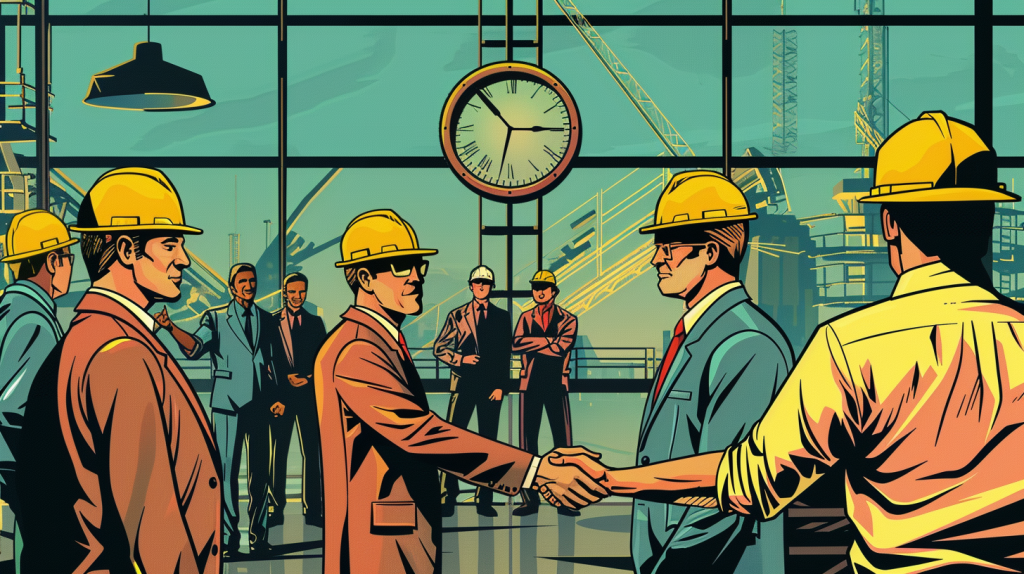
StruxHub
Discover how StruxHub can revolutionize your construction management. Contact us today!
Related Pillar Articles:
Best Guide to Construction Logistics Plans (CLPs): What Owners Want to See Before Work Starts
